Did you know that the rope you choose can make or break your project? In the world of braided and cotton ropes, the possibilities are as varied as they are exciting. From the strength of nylon to the versatility of polyester, the heat resistance of Kevlar to the lightweight power of UHMWPE, each material tells a unique story of innovation and application.
At iRopes, we've seen firsthand how the right rope can transform an ordinary task into an extraordinary achievement. Whether you're rigging a sailboat, securing cargo in aerospace, or crafting intricate macramé, understanding the nuances of different rope materials is crucial. That's why we're diving deep into the world of braided and cotton ropes, exploring everything from the classic charm of cotton to the cutting-edge performance of Technora and Vectran.
Join us as we unravel the mysteries of rope technology, examining the types of braided rope, cotton rope, and nylon cord that are shaping industries across the globe. By the end of this journey, you'll not only understand the importance of selecting the right rope material but also gain insights into how these choices can elevate your projects to new heights. Are you ready to discover the perfect rope for your needs? Let's begin!
Exploring the Types of Braided Rope
When it comes to rope selection, understanding the various types of braided rope can make all the difference in your project's success. Let's dive into the world of braided ropes and explore their unique characteristics, advantages, and applications.
Common Materials Used in Braided Ropes
Braided ropes are crafted from a variety of materials, each offering distinct properties that cater to different needs. As someone who's spent years working with ropes in both professional and recreational settings, I've come to appreciate the nuances of each material:
- Nylon: Known for its excellent strength and elasticity, nylon is a popular choice for dynamic applications.
- Polyester: Offers great UV resistance and maintains its strength when wet, making it ideal for marine use.
- Polypropylene: Lightweight and buoyant, perfect for water-based activities.
- Cotton: Soft and easy to handle, often used in decorative or low-stress applications.
- Hemp: A natural fibre with good durability and resistance to rot.
Did You Know?
High modulus polyethylene (HMPE) ropes are considered the strongest braided ropes available!
Comparing Different Braided Rope Constructions
The way a rope is braided significantly impacts its performance. Let's compare the main types:
- Solid Braid: Offers a firm, compact structure that resists flattening and kinking.
- Diamond Braid: Features a hollow core, providing flexibility and ease of splicing.
- Hollow Braid: Lightweight and easy to splice, ideal for creating custom lengths.
- Kernmantle: Combines a strong core with a protective outer sheath, popular in climbing ropes.
I remember a rock climbing trip where I truly appreciated the importance of rope construction. The kernmantle rope's durability gave me the confidence to tackle challenging routes, knowing it could withstand the wear and tear of rough rock surfaces.
Choosing the Right Braided Rope for Your Needs
Selecting the perfect braided rope involves considering several factors:
- Strength: Ensure the rope can handle the expected load with a suitable safety margin.
- Durability: Consider the rope's resistance to abrasion, UV rays, and chemicals.
- Flexibility: Think about how easily the rope needs to bend or be tied.
- Intended Use: Match the rope's properties to your specific application.
Have you ever wondered how different rope types might affect your project? Take a moment to reflect on your current needs and how the right braided rope could enhance your work or hobby.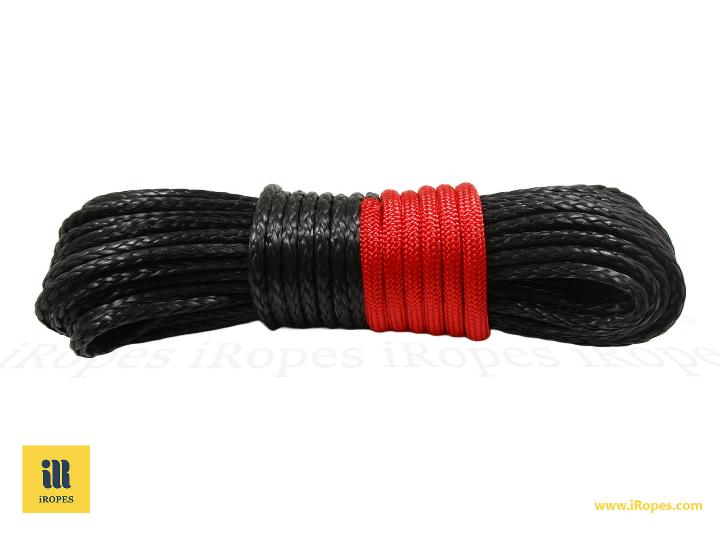
Remember, the best rope for you isn't always the strongest or most expensive. It's the one that best suits your specific requirements and conditions.
By understanding the types of braided rope available, you're well on your way to making an informed decision.
Examining Different Types of Cotton Rope
When it comes to versatile and user-friendly ropes, cotton stands out as a classic choice. As someone who's worked with various rope materials over the years, I've come to appreciate the unique qualities of cotton rope. Let's dive into the world of cotton ropes and explore their types, characteristics, and applications.
Common Categories of Cotton Rope
Cotton ropes generally fall into two main categories: braided and twisted. Each type has its own set of characteristics that make it suitable for different uses.
- Braided cotton rope: This type is created by interweaving multiple strands of cotton fibres. The result is a smooth, round rope that's both strong and flexible. I've found braided cotton ropes to be particularly useful for crafting projects and decorative purposes.
- Twisted cotton rope: Made by twisting cotton fibres together, this type of rope has a more traditional appearance. It's often less expensive than braided rope and is great for general-purpose use around the home or garden.
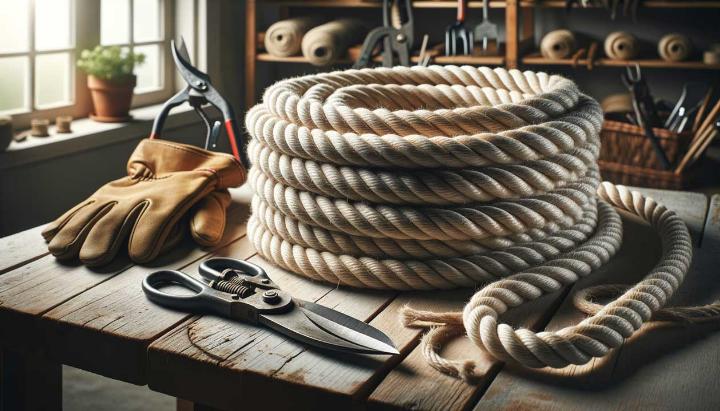
Characteristics and Uses of Cotton Rope
Cotton rope has several unique properties that set it apart from other rope materials. Having worked with cotton ropes in various settings, I can attest to their versatility and ease of use.
- Softness: Cotton rope is incredibly soft to the touch, making it comfortable to handle even without gloves.
- Flexibility: The natural fibres allow for easy knotting and manipulation, perfect for intricate tying projects.
- Absorbency: Unlike synthetic ropes, cotton absorbs moisture, which can be both an advantage and a disadvantage depending on the application.
- Biodegradability: For environmentally conscious users, cotton rope's natural composition means it will break down over time.
These properties make cotton rope ideal for a variety of applications. I've used cotton rope for everything from tying up plants in my garden to creating beautiful macramé wall hangings. Here are some common uses:
- Crafting: Ideal for macramé, weaving, and other decorative projects.
- Light load applications: Perfect for clotheslines, tying parcels, or securing tarps.
- Marine use: Used for decorative purposes on boats, though not suitable for load-bearing marine applications.
- Theatre and stage production: Often used for curtain ties and prop construction due to its ease of handling and flame-resistant properties when treated.
When using cotton rope outdoors, remember that it can shrink when wet and may rot if left damp for extended periods. Consider treating the rope or opting for a synthetic alternative for long-term outdoor use.
Have you ever used cotton rope for a project? Whether you're a seasoned crafter or a DIY beginner, understanding the types and characteristics of cotton rope can help you choose the right option for your next endeavour. Remember, the best rope for you is the one that suits your specific needs and the conditions in which you'll be using it.
Investigating the Versatility of Types of Nylon Cord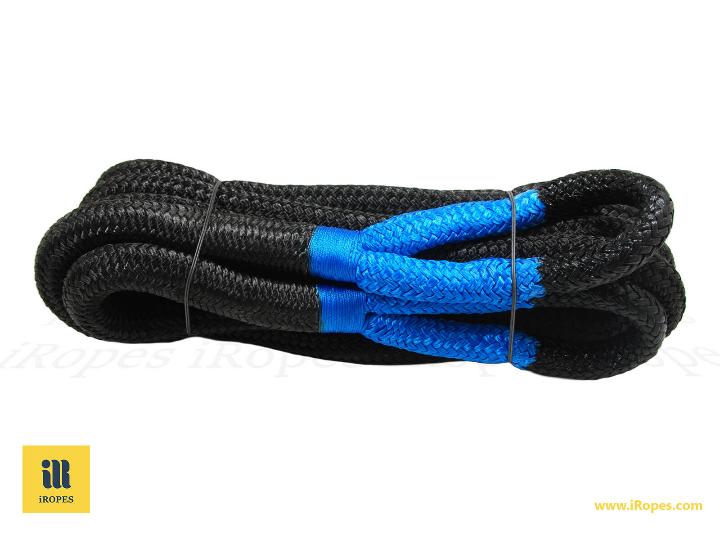
• With 260mm length eye splices, 100mm length Rubber black Coating wrapped on
the rope that offers great protection from UV,resistance and other chemical damages.
• Extra rubber coated eyelet ends, make the ropes more durable and excellen
abrasion resistance. High elongation to reduce the shock load.
MATERIAL: Nylon core Nylon cover
CONSTRUCT: double braided
ELONGATION: 30%
As a rope enthusiast and industry professional, I've had the pleasure of working with various types of nylon cord over the years. The versatility and strength of nylon never cease to amaze me, and I'm excited to share my insights with you. Let's dive into the world of nylon cords and explore their unique properties and applications.
Nylon Cord Construction and Its Impact on Strength and Durability
Nylon cords are crafted through a meticulous process that greatly influences their performance. The construction method plays a crucial role in determining the cord's strength, durability, and flexibility. Here's what I've learned about nylon cord construction:
- Monofilament construction: This type consists of a single strand of nylon, offering excellent abrasion resistance and low water absorption.
- Multifilament construction: Made up of multiple thin strands, these cords are incredibly flexible and have a soft feel, perfect for applications requiring frequent bending.
- Braided construction: This method interweaves multiple strands, resulting in a strong, compact cord with excellent load-bearing capabilities.
I remember a camping trip where I used a braided nylon cord to secure our food cache high up in a tree. The cord's strength and resistance to stretching gave me peace of mind, knowing our supplies were safe from curious wildlife.
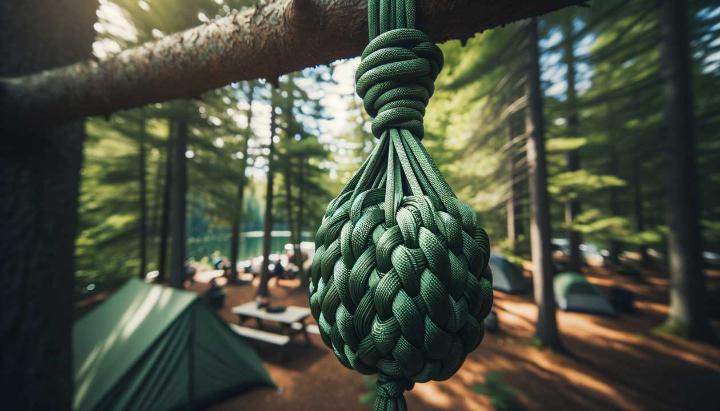
Types of Nylon Cord and Their Unique Characteristics
The world of nylon cords is diverse, with each type offering distinct properties. Let's explore some of the most common types:
- Nylon 6 cord: Known for its excellent abrasion resistance and elasticity, making it ideal for applications requiring flexibility. For an in-depth comparison of different nylon options, check out Nylon Wire Rope vs Wire Rope Winch.
- Nylon 6,6 cord: Offers superior strength and heat resistance compared to Nylon 6, perfect for heavy-duty industrial uses. To explore its market applications, you might find this article about High Strength Rope Features and Market Applications enlightening.
- Nylon 4,6 cord: Boasts exceptional dimensional stability and chemical resistance, often used in specialized engineering applications.
- Nylon 12 cord: Features low moisture absorption and excellent chemical resistance, making it suitable for outdoor and marine environments.
Have you ever wondered why some nylon cords perform better in certain conditions than others? The secret lies in their molecular structure and manufacturing process, which give each type its unique set of characteristics.
When selecting a nylon cord, consider factors such as UV resistance, moisture absorption, and chemical compatibility to ensure optimal performance in your specific application.
Nylon Cord Applications in Various Industries
The versatility of nylon cords makes them indispensable across a wide range of industries. Here are some fascinating applications I've encountered:
- Marine industry: Nylon cords are used for mooring lines and fishing nets due to their excellent strength-to-weight ratio and resistance to saltwater. For more about optimal marine ropes, discover The Ultimate Guide to Nylon Mooring Rope Mastery.
- Outdoor recreation: From climbing ropes to tent guy lines, nylon cords are essential for adventure enthusiasts like myself.
- Aerospace: High-performance nylon cords find their way into aircraft components, where their lightweight nature and durability are crucial.
- Fashion and textiles: The flexibility and dyeability of nylon cords make them popular in clothing, accessories, and decorative applications.
I once visited a parachute manufacturing facility and was astounded by the precision and care taken in selecting the right nylon cord for each component. It really drove home the importance of choosing the correct type of nylon cord for critical applications.
As we've explored the world of nylon cords, it's clear that their versatility and unique properties make them an invaluable material across various industries. Whether you're an outdoor enthusiast, an industrial professional, or simply curious about materials science, understanding the types of nylon cord available can help you appreciate the technology behind everyday items and specialized equipment alike.
Advanced Rope Materials for Specialized Applications
As we venture deeper into the world of rope technology, it's fascinating to see how far we've come from the traditional natural fibers. Today, we're exploring a realm where science meets practicality, resulting in ropes that push the boundaries of what's possible. Let's dive into the exciting world of advanced rope materials and their specialized applications.
Innovations in Synthetic Rope Technology
The evolution of rope materials has been nothing short of revolutionary. I remember when synthetic ropes first hit the market - the skepticism was palpable. But now? They're indispensable in countless industries. Here's a look at some key synthetic materials that have transformed rope technology:
- Nylon: Known for its impressive strength-to-weight ratio and excellent shock absorption. I've used nylon ropes for rock climbing, and their ability to stretch slightly under load provides a crucial safety buffer.
- Polyester: Offers superior UV and water resistance, making it a go-to choice for marine applications. During a sailing trip, I witnessed firsthand how polyester ropes maintained their integrity even after prolonged exposure to harsh sea conditions.
- Aramid fibers (e.g., Kevlar): These high-strength, heat-resistant fibers are often used in protective gear and high-performance ropes. Their incredible strength-to-weight ratio is truly mind-boggling.
- HMPE (High Modulus Polyethylene): Ultra-strong and incredibly lightweight, HMPE fibers offer unmatched strength and versatility.
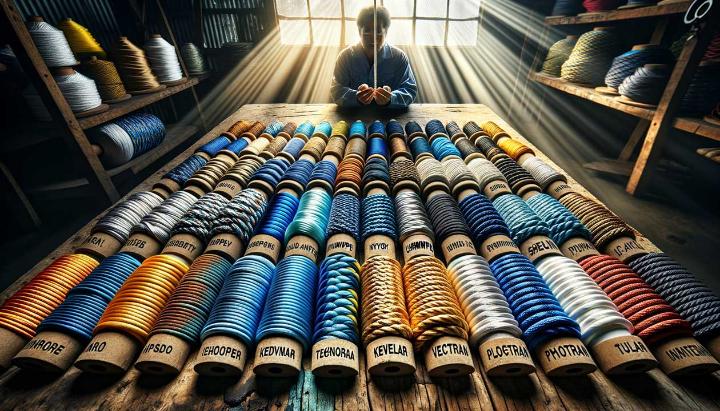
The construction methods for these advanced ropes have also evolved. Take the kernmantle design, for instance. It combines a strong core (kern) with a protective sheath (mantle), resulting in ropes that are both robust and handling-friendly. I've used kernmantle ropes for rappelling, and the smooth handling they offer, even in wet conditions, is remarkable.
High-Performance Fibers for Industrial and Marine Use
When it comes to extreme environments, high-performance fibers truly shine. Let's explore some specialized applications:
- Offshore oil and gas: HMPE ropes are increasingly replacing steel cables for mooring systems due to their incredible strength and lightweight properties.
- Deep-sea exploration: Synthetic ropes made from materials like Vectran offer excellent performance at extreme depths, resisting the crushing pressures of the ocean.
- Aerospace: High-strength, low-weight ropes made from advanced fibers are crucial in various aerospace applications, from cargo securing to emergency systems.
I once visited a deep-sea research facility and was amazed to learn about the ropes they use for their submersibles. These ropes need to withstand enormous pressures, resist corrosion, and maintain their strength in near-freezing temperatures. It's a testament to how far rope technology has come.
Did you know? Some advanced synthetic ropes can be up to 15 times stronger than steel by weight!
Looking to the future, research in rope materials continues to push boundaries. Scientists are exploring bio-based synthetic fibers and even incorporating smart technologies into ropes for real-time monitoring of stress and wear.
As we wrap up this exploration of advanced rope materials, I'm curious - have you ever used any of these high-performance ropes in your work or hobbies? What was your experience like? The world of rope technology is constantly evolving, and staying informed about these advancements can open up new possibilities in various fields.
Choosing the right rope material is critical for the success and safety of your projects. This blog delves into different types of braided rope, including nylon, polyester, kevlar, UHMWPE, Technora, Vectran, and PP. Each material offers unique properties like strength, durability, and resistance to various environmental factors. The article also covers types of cotton rope and types of nylon cord, examining their constructions, advantages, and practical applications. You'll gain insights on selecting the appropriate rope for specific tasks across industries like marine, aerospace, and outdoor recreation, helping you make informed decisions for your next endeavour.
Discover Your Perfect Rope Solution
Fill in the form above to get tailored advice and solutions from our rope specialists. Whether you need a specific type of braided rope, cotton rope, or nylon cord, we're here to help you find the perfect match for your needs.